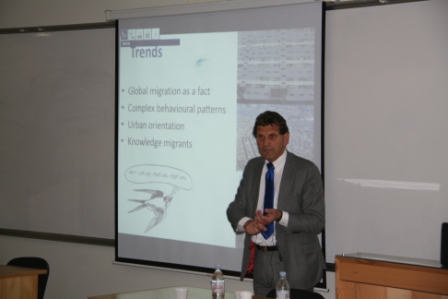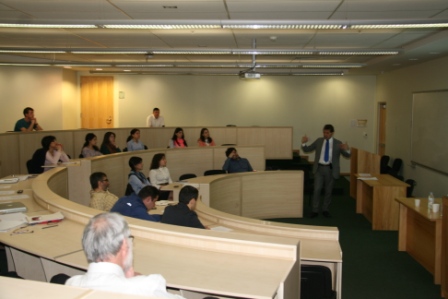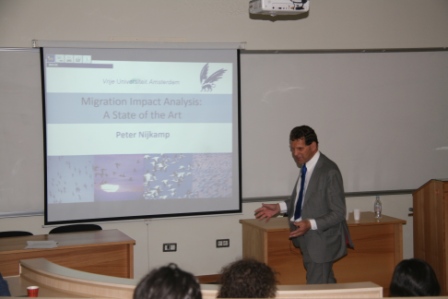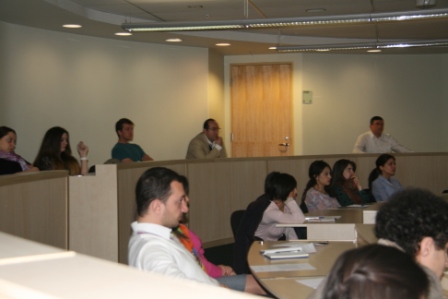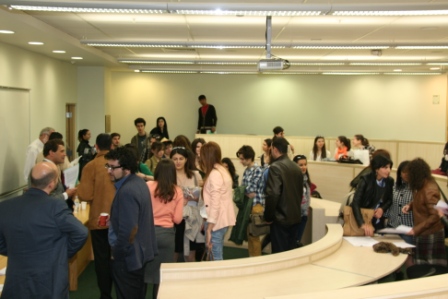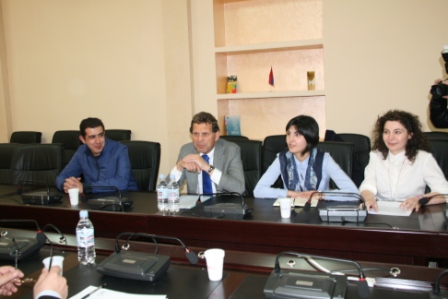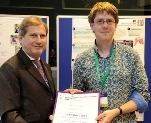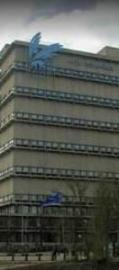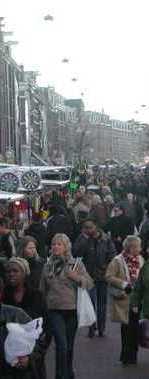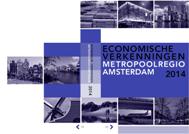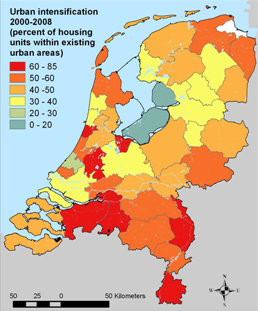Council
Elisabete Martins
Call for papers for XL Spanish Meeting (RER): Financing and the role of the regions and towns in the economic recovery
English version of the Meeting website is already available: http://www.reunionesdeestudiosregionales.org/Home-82-home
In attach you have more information.
Important dates:
Abstracts: 15 May 2014
Abstract acceptance: 31 May 2014
Paper: 30 September 2014
Final acceptance: 15 October 2013
Regular Payment Period: 31 October 2014
Extra Payment Period: 21 November 2014
Conference in Armenia by Peter Nijkamp, 21 March 2014
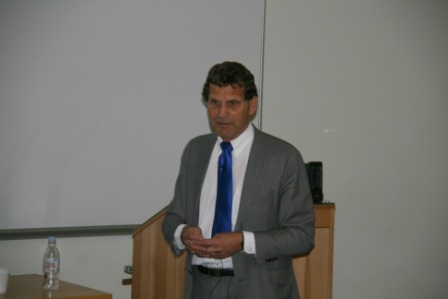
By invite and organization of RSAI Armenian section and financial support of Gulbenkian Foundation honorable professor of Vrije Universiteit, Amsterdam Dr. Peter Nijkamp visited Armenia on March 21th.
The purpose of this visit was to become acquainted with the scientific capacity of Armenia and to discuss among many things the possibility of bilateral cooperation with Armenian university.
During his one day visit professor had separate meetings with scholars of Armenian State University, American University of Armenia and Armenian State University of Economics.
The purpose of his visit was also to conduct public seminar on “International migration and regional development” for Armenian students and researchers in AUA (number of participants is around 40).
With the culmination of the visit came an understanding of further steps that should be taken, particularly has been agreed that in autumn of 2014 with support of Armenian universities international workshop will be organized. Also the team that will be responsible for organization of the workshop and will be decentralized from any institution was created during this visit and is composed from scholars of main universities of Armenian.
REPORT
From March 20-22, 2014 Peter Nijkamp has visited Armenia, with a view to the creation of an Armenian Section of the RSAI. This visit was a follow-up of earlier contacts established by Tomaz Dentinho. He visited three universities in the capital city Yerevan, the American University of Armenia, the State University of Yerevan, and the Armenian State University of Economics. The meeting was well prepared by the local organizer, Anahit Harutyunyan. Various meetings took place to seek for opportunities to reinforce regional science initiatives in the country and to come to the foundation for an official RSAI Section in Armenia. Several international workshops and teaching courses are foreseen in the coming year, so that the plan for an Armenian RSAI Section may materialize next year. Some Armenian representatives will also participate in the forthcoming ERSA conference in St. Petersburg (August 2014).
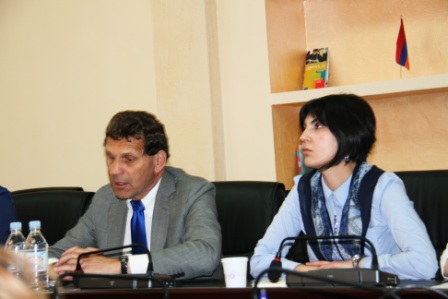
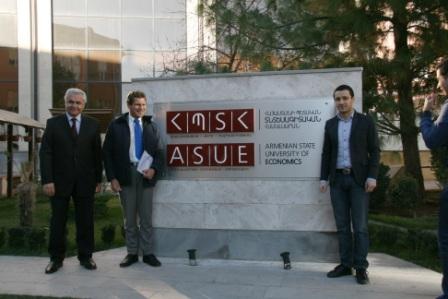
Migration Impact Assessment: New Horizons
Prof. Dr. Peter Nijkamp
Vrije Universiteit, Amsterdam
Abstract. Most countries of the world are increasingly affected by international migration: either as senders of emigrants, receivers of immigrants, or in many cases as both. The composition of the migrant population is often very different from that of the host population in terms of demographic, cultural and socio-economic characteristics. Migrant settlement is world-wide also predominantly concentrated in specific ‘attractor’ regions, in particular in metropolitan agglomerations of the developed world. The extent to which foreign migrants exert positive or negative long-range effects on the local, regional or national economy is, however, an underresearched topic in many counties. Broadly speaking, both sending countries and host countries have gained from two centuries of mass population redistribution and crossborder mobility is presently greater than ever before. However, in recent years there has been a growing backlash against the notion that international migration at current levels provides a net benefit to nation states. Migrant-sending countries are concerned about a ‘brain drain’ of highly qualified workers, while receiving countries worry that the ‘migrant absorption capacity’ has been exceeded, leading to detrimental economic outcomes and rising social tensions. Of course, there are clear parallels with the other dimensions of unprecedented global economic integration since 1980s, namely trade and capital mobility, of which the benefits and costs are also hotly debated. This paper discusses examples of a range of the scientific methods that are currently available to conduct Migration Impact Assessment (MIA). It also provides various case studies that may assist in verifying and quantifying the societal consequences of international migration. We define MIA as the integrated application of scientific tools to trace the broad socio-economic impacts of cross-border migration and related policies. Clearly, the impacts of migration go beyond the socio-economic realm and include cultural, environmental, political, spiritual and strategic issues.
International Workshop on Irregular Migration, Marrakech and Rabat, Morocco April 8-11, 2014
International Workshop on Irregular Migration
Marrakech and Rabat, Morocco
April 8-11, 2014
Organizers:
Amelie F. Constant (George Washington University and IZA)
Abdellatif Khattabi (Association Marocaine des Sciences Régionales)
Peter Nijkamp (Free University, Amsterdam and IZA)
Abdelaziz Adidi (Institut National de l’Aménagement et de l’Urbanisme)
Karima Kouritit (Free University, Amsterdam)
Information and Program of the Workshop (download)
School of Geography, Planning and Environmental Management (GPEM) Head of School, Professor and Lecturer/Senior Lecturer positions available
The School of GPEM is recruiting a new Head of School, Professor in Planning, Lecturer/Senior Lecturer in Human Geography, and Lecturer/Senior Lecturer in Urban Environmental or Development Planning.
Applications for Head of School close 28 April 2014. Apply online: http://uqjobs.uq.edu.au/jobDetails.asp?sJobIDs=495813&stp=AW
Applications for all other positions close 14 April 2014. Apply online: http://uqjobs.uq.edu.au/jobDetails.asp?sJobIDs=495778&stp=AW
REMINDER: NECTAR Cluster 4 meeting on Commuting, Migration, Housing and Labour Market
Dear NECTAR friends,
We would like to remind you that the deadline for the next NECTAR Cluster 4 meeting on Commuting, Migration, Housing and Labour Market is soon approaching (Friday 4th of April).
This cluster meeting will be held during the 12th and 13th of June (2014) in Stockholm Sweden. Please see the attached call for paper for more information.
All questions about this meeting should be directed to This email address is being protected from spambots. You need JavaScript enabled to view it. or This email address is being protected from spambots. You need JavaScript enabled to view it..
Kind regards
Ana Condeço-Melhorado
NECTAR secretary
2nd Call for Papers | 20th APDR Congress - RENAISSANCE OF THE REGIONS OF SOUTHERN EUROPE | 10-11 July 2014 | University of Évora
2nd Call for Papers
It is our pleasure to announce the 20th APDR Congress, to be held at the University of Évora, Portugal, from July 10 to July 11, 2014.
Theme of the Conference:
Renaissance of the Regions of Southern Europe
The 20th APDR Congress has the main theme of Renaissance of the Regions of Southern Europe. In the recent years, the southern Europe countries experienced, particularly aggravated, the economic crisis that affected much of the western world. This crisis has thus helped to exacerbate the existing inequalities between the North and South of Europe. After several decades away from levels of development and economic growth recorded elsewhere and the considerable efforts in terms of regional development policies, the southern regions of Europe need to find your way. Thus, this Congress will seek to answer the following questions: What conditions are necessary for the economic revival of southern Europe? What is wrong in regional development policies pursued so far? How can countries of southern Europe to improve their levels of development? The boundary between Europe and the Mediterranean is a threat or an opportunity? How can Southern Europe take advantage of the connection to the South Atlantic?
Provisional Program is attached.
The 2nd call for papers is open and your participation is very welcome!
Deadlinefor Abstracts submissions: April 24th , 2014. Abstracts should be submitted electronically, using the platform available on the Conference website: https://events.digitalpapers.org/apdr2014/
All information at the congress website: http://www.apdr.pt/congresso/2014/
Looking forward to meeting you in Évora!
Maria Conceição Rego
Chair of the Local Organizing Committee
Spatial econometrics with applications in GeoDaSpace and R, May 21-23, 2014
Dear colleagues,
This mail is to present the course "Spatial econometrics with applications in GeoDaSpace and R", which will take place in Madrid (Spain), at the Universidad Autónoma de Madrid in May 21-23, 2014. This course is part of the scientific activities supported by the ECONRES Research Group (www.uam.es/econres) and financed by the METAGEO Project (UAM-Santander Bank). Prof. Dusan Paredes (IDEAR-Universidad Católica del Norte, Chile) and Coro Chasco (ECONRES-Universidad Autónoma de Madrid, Spain) will give a series of lectures (14 hours) on spatial econometrics. The lectures are supplemented with special PC training sessions (4 hours). Applications to be presented are in economics and social sciences.
The goal of the Seminar is to provide the participants with a sound understanding of basic and more advanced principles of spatial econometrics and to offer tools for practical application of the methodology. Commonly available software products (GeodaSpace and RStudio) will be introduced and practiced in the PC training sessions. Please, find enclosed the course flier with more specific information. For ON-LINE REGISTRATION and FEE PAYMENT, you must select the correct option in the following webpage:
http://matriculas.fuam.es/matriculauam/Convocatorias.action
There are different fees depending on the following options:
Graduate and Post-graduate students from UAM: 75 EUROS.
Graduate and Post-graduate students from other (non-UAM) Universities or Academic Institutions: 100 EUROS
Scholars from UAM and other Universities or Academic Institutions: 200 EUROS
People from other private or public institutions: 350 EUROS.
Members of the ECONRES research group and the METAGEO UAM-Santander Project: 0 EUROS
Please, take in mind that prices will experience an increase after May 12, 2014.
We are looking forward to meeting you in Madrid.
Best regards,
Coro Chasco Yrigoyen
Profesora Dpto. Economía Aplicada
Directora del Grupo de Investigación ECONRES
Universidad Autónoma de Madrid
28049 Madrid (Spain)
Telf.: ++34 91.497.3668/4266
Fax: ++34.91.497.39.43
E-mail: This email address is being protected from spambots. You need JavaScript enabled to view it.
http://www.uam.es/coro.chasco
http://www.uam.es/econres
https://www.researchgate.net/profile/Coro_Chasco
Job Announcement | Universidad Católica del Norte - recruiting two associate professors for researching and teaching activities.
The Universidad Católica del Norte (www.ucn.cl), Department of Economics is recruiting two associate professors for researching and teaching activities.
We invite to apply Doctors and PhD in Economics and Geography. We will specially value the knowledge in the fields of regional economics, economic geography, urban economics, natural resources economics and economic development. The position requires a medium level of Spanish language. The applicant must 1) contribute to graduate-level teaching; 2) teach undergraduate courses; 3) ability to develop and maintain an externally funded research program; 4) ability to contribute to the department’s interdisciplinary mission with publications.
It is expected that the candidate will be available to start working preferably in August, 1st 2014.
Required qualifications: 1) a full curriculum vita, 2) a doctoral degree closely related to the fields above describe at the time of appointment, 3) letter of application describing research and teaching interests, 4) samples of working papers or publications and 5) the names and contact details of two referees plus the recommendation letter
Applications will be accepted until the positions are filled.
Any question about the application process must be sent to Dusan Paredes, Tel. 56 55 355746, This email address is being protected from spambots. You need JavaScript enabled to view it.
Newsletter VU Spatial Economics
|
|||||||||||||||||||||||||||||||||||||||||||||||||||||||||||||||||||||||||||||||||||||||||||||||||||||||||||||||||||||||||
|
|||||||||||||||||||||||||||||||||||||||||||||||||||||||||||||||||||||||||||||||||||||||||||||||||||||||||||||||||||||||||
|
|||||||||||||||||||||||||||||||||||||||||||||||||||||||||||||||||||||||||||||||||||||||||||||||||||||||||||||||||||||||||
Reminder INFER Workshop in Urban and Regional Economics (Reus, Universitat Rovira i Virgili)
Dear colleagues,
This mail is to remind you the INFER Workshop in Urban and Regional Economics. The workshop is part of the scientific activities supported by the CREIP research centre (www.urv.cat/creip) and will take place in Reus, at the Faculty of Economics of the Rovira i Virgili University in September 2014 (4th and 5th).
Topics:
The workshop aims to gather researchers in Urban and Regional Economics. The focus is on empirical papers, but theoretical analyses are also welcome. Topics of interest include, but are not limited to:
-Agglomeration economies
-Location of economic activities
-Migration
-Firm entry, exit and survival
-Housing
-Environmental and sustainable development
-Spatial econometrics
Submission:
To submit a paper to the workshop, please send a complete version in pdf format to the email address "This email address is being protected from spambots. You need JavaScript enabled to view it." with the subject "Submission to the INFER Workshop in Urban and Regional Economics". The deadline is May 15th 2014. The front page of the document should include the title, authors, affiliations, contact details, and a short abstract. Notification of acceptance/rejection should be received by June 16th 2014.
Registration:
The registration fee for presenting and non-presenting participants is 100 euros for INFER members and 160 euros for other participants. The registration fee includes all lunches, conference refreshments and the conference dinner (September 4th). It does not include travel or accommodation costs. Participants are expected to arrange their own accommodation. The deadline for registration and payment is July 10th 2014.
You will find all the details at http://events.urv.cat/go/infer-workshop.
Kind regards,
Josep-Maria Arauzo-Carod & Miguel Manjón-Antolín
Universitat Rovira i Virgili & CREIP
About Us
The Regional Science Association International (RSAI), founded in 1954, is an international community of scholars interested in the regional impacts of national or global processes of economic and social change.


